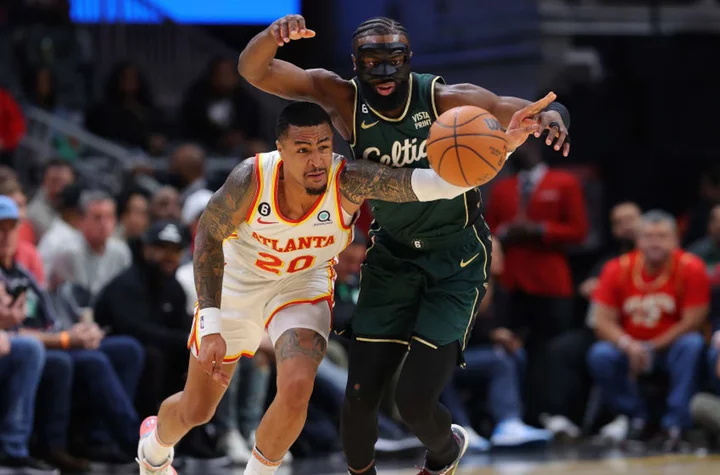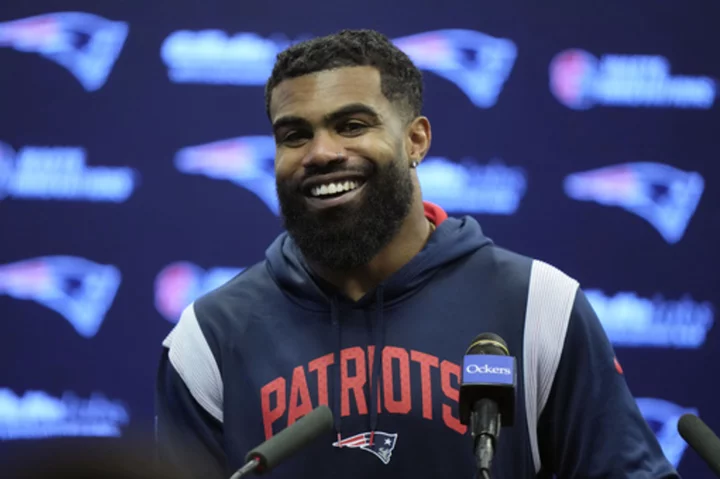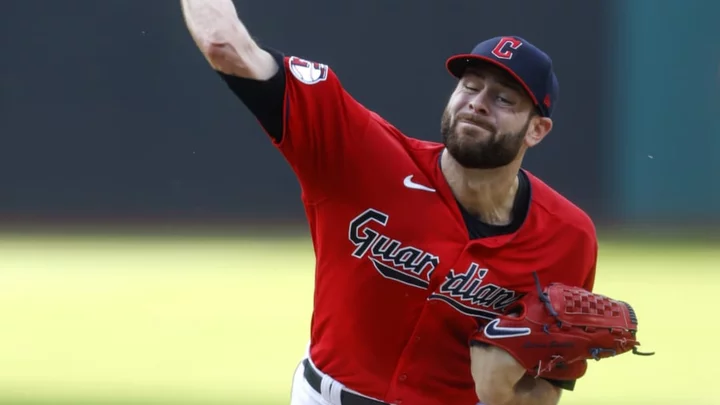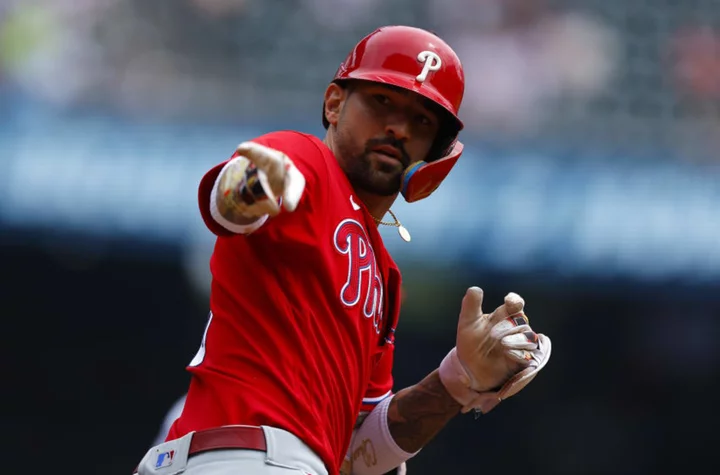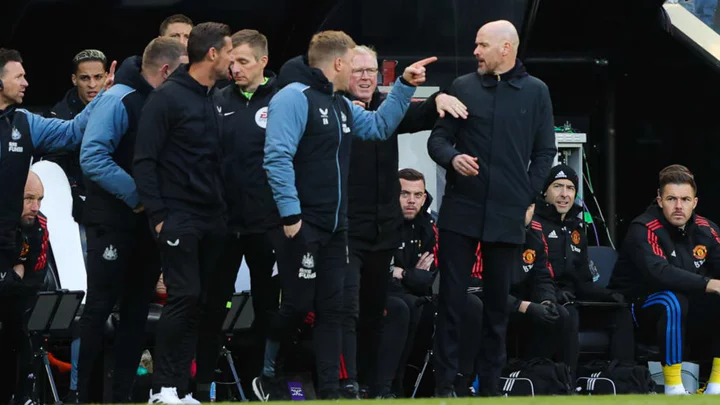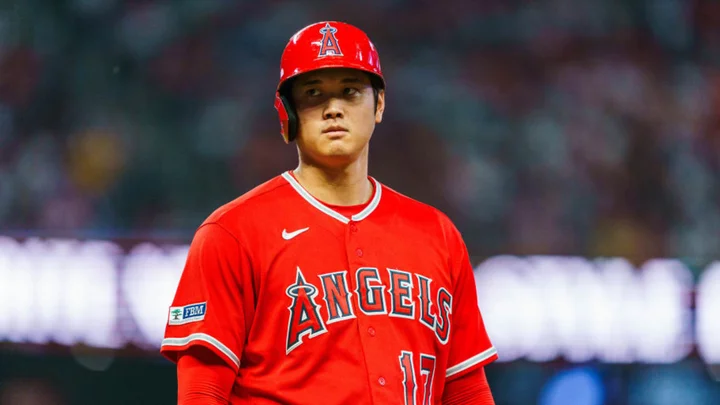In just about every basketball broadcast, at some point, someone brings up the turnover battle. In a league where the difference between the best and worst offense was roughly 0.1 points per possession last season, a game can come down to who has more bites at the possessions apple, and nothing swings that battle quite like a turnover.
It's common sense that turnovers are costly. It's an extra possession for your opponent to score and a possession where you come up empty-handed. However, in a sport about points, a lost possession doesn't mean anything if it doesn't cost you points.
How many points is a turnover worth in the NBA?
Last season, teams averaged 1.20 points per possession following a turnover. The Sacramento Kings set the NBA single-season record for offensive rating at 119.4, or 1.19 points per possession. Every turnover effectively turns your opponent's next possession into the greatest offense in NBA history.
While it's bad enough that turnovers can turn an average offense into a juggernaut, that's not the only cost. A turnover guarantees zero points, and that's significant. Last season, the league average true shooting percentage came in at 58.1 percent. This means that when a team is able to get a shot off, they score 1.16 points on average. A turnover turns that into 0.
When you add up the benefit of a turnover for the opponent and the lost opportunity to get a shot up, a single turnover, on average, is a 2.36 point swing in the game. While this is a rough average, some types of turnovers are more costly than others, it shows how much ground can be won or lost by winning the turnover battle.
Turnovers are the cost of doing business in the NBA
For as costly as turnovers are, they shouldn't be avoided like the plague because the cost of generating high-quality offense is turnovers. Every drive to the basket or threaded pass increases the risk of a turnover, but it also increases your team's chances of scoring. The dynastic Golden State Warriors have long been a turnover-heavy operation, but the positive effects it has on their shot quality trumps the cost of losing the possession battle.
While the turnover battle is well understood in a team-wide context, the individuals committing them often get a free pass. There are players whose inability to protect the ball is holding themselves and their teams back from reaching another level, and it's especially detrimental if they aren't able to offset their turnovers with a steady flow of assists. The average points generated per assist last season was 2.4 points, which means every turnover erases 98.3 percent of every assist.
To determine the players who would benefit most from reigning in their turnovers, I compared their expected points lost per turnover (2.36 multiplied by total turnovers) to their expected points added through passing (2.4 multiplied by total assists) and normalized it to their per 36 minute rate to create assist-to-turnover points added. The figure gives us a rough measure of how each individual player's assist-to-turnover ratio is helping or hurting their team.
Positional distinctions had a massive impact on a player's turnover and assist totals. Following conventional basketball wisdom, as a player slides down the positional spectrum their assist-to-turnover ratio improves dramatically. To prevent a list exclusively comprised of centers, I compared each player to their assigned positional distinction according to Basketball Reference. The average center, through assist-to-turnover points added, added 1.18 points per 36 minutes, power forward came in at 2.53, small forward at 2.73, shooting guard at 4.05, and point guard at 9.69.
The center who can get to the next level by cutting their turnovers: Jaren Jackson Jr.
Jaren Jackson Jr. had the best season of his young career in 2022-23. He set career highs in effective field goal percentage, points per game, rebounds per game, free throws per game, and won the Defensive Player of the Year. Jackson is a bonafide star, but there is one aspect of his game that is holding him back from making a serious run at an All-NBA spot, and it's his turnovers.
Last season, Jackson committed 107 turnovers and only chipped in 60 assists. He lost the most expected points from his assist-to-turnover ratio of any player in the league (minus-108.4 points), and on a per-36-minute basis, he was the seventh-worst center (minus-2.18 points per 36 minutes) behind a cohort of backups. Centers, unsurprisingly, were the worst position group in this regard, but Jackson grading out this poorly is surprising considering his on-ball talent is well above the average center.
The easiest path for Jackson to reign in his turnovers is to cut down on his offensive fouls. His 38 offensive fouls ranked seventh in the league and are completely within his control. Centers operate in the tightest confines, so lost ball and bad pass turnovers will always be a part of the trade, but for a player who averaged less than an assist per game (0.95), 28 bad pass turnovers are ghastly.
While Jackson needs to cut down on the turnovers, any boost in passing could also go a long way. Asking a player to average two assists per game is not a tall task, and it would have dragged him much closer to average, even if it came with more turnovers. The cost of Jackson's poor ball security and passing is not negligible. His excellent positional scoring is largely negated, if not entirely erased, by his inability to take care of the ball.
The Memphis Grizzlies will be without Ja Morant for the first 25 games, and it offers Jackson an excellent opportunity to get more on-ball reps. Even if he sinks instead of swimming, it should prepare him to be more careful with the ball when Morant returns, and his offensive role is again simplified. The Grizzlies are a burgeoning giant in the West, and Jackson cutting down on turnovers could be the small unseen push they need to get over the top.
The power forward who can get to the next level by cutting their turnovers: Lauri Markkanen
Lauri Markkanen's 2022-23 season was sensational. He ramped up his usage significantly and still improved his efficiency across the board. It's rare for any player to go from role-player usage to star usage and simply maintain their efficiency, and even rarer for their efficiency to go from good to elite, but Markkanen pulled it off and was rightly rewarded with the Most Improved Player award. Markkanen's explosion into an elite scorer made him one of the best offensive power forwards in the league, and that's despite him turning the ball over with abandon.
Markkanen's 127 turnovers aren't an obvious eye-sore, but he paired that with only 123 total assists. For power forwards, his assist-to-turnover points added was the seventh worst on a per-36-minute basis (minus-0.06), and he was ahead of a bunch of pseudo-centers, deep bench players, and rookie Tari Eason. Markkanen's biggest problem was his proclivity to cough up live ball turnovers. As a first-time go-to option, it isn't surprising that Markkanen showed some growing pains, but cutting his live ball turnovers by even 20 percent could see his offense go even higher.
If Markkanen is destined to be an elite player-finisher with negligible playmaking and more turnovers than you'd like, he's still an excellent player. However, he has some very attainable gains in the playmaking and ball security department to take his offense to near superstar levels. There's a real likelihood that Markkanen's 2022-23 combination of shooting volume and efficiency will go down as a career-best, but if he can make some minimal improvements in his assist-to-turnover ratio, his 2022-23 doesn't also have to be a career year.
The small forward who can get to the next level by cutting their turnovers: Jaylen Brown
Jaylen Brown is the patron saint of the eye test vs. analytics debate, and his assist-to-turnover ratio is the primary factor. Most advanced all-in-one advanced metrics paint Brown as a good, but not All-Star caliber player. Meanwhile, your average NBA reporter, former player with a microphone, and sports debater talk about Brown as an All-NBA level contributor and ask if he and Jayson Tatum are the best duo in the league. So why is there such a divide between what people see and what the math says?
The easy answer is Brown is a high-volume scorer, and points are the one stat that even the mathematically allergic can consume. However, Brown's scoring, while probably not quite as impactful as the raw figure would suggest, is still pretty dang impressive. 26.6 points per game on league-average efficiency is incredibly valuable, no matter what effective field goal truthers tell you. The problem Brown faces is he gives away far too many points through his turnovers.
For a small forward, Brown's per-36-minute assist-to-turnover points added was the 23rd worst (plus-1.3), but he also spent 39 percent of his minutes at shooting guard, where he would have had the sixth worst figure for any player to play over 1,000 minutes. Fixating on Brown's positional distinction also misses a crucial point. He is one of the highest-usage players in the sport, and the offensive responsibility Brown shoulders demands better production.
Out of the 70 qualified players to average 20 or more field goal attempts per 100 possessions (Brown ranked sixth at 28.0), Brown's 1.175 assist-to-turnover ratio was the 11th-lowest, and only four non-centers or power forwards produced a lower figure. High-usage players either need to be unconscionably efficient as scorers (Joel Embiid) or chip in enough assists to offset their turnovers (Trae Young) to be true star-level offensive contributors (some do both).
Last season, Brown averaged 26.7 points per 36 minutes and added another 1.3 assist-to-turnover points added to produce a tidy 28.0 points per 36 minutes. Meanwhile, Julius Randle scored 25.5 points per 36 minutes and added another 3.3 assist-to-turnover points added for a total of 28.8 points per 36 minutes. There's a very strong argument that Randle had a better offensive season than Brown last season, but bringing that take to First Take would probably get you laughed off the set.
The easiest avenue for Brown to improve his overall offensive impact is to trim his lost ball turnovers. The running joke that Brown doesn't have a left hand is somewhat overblown, but his leaky handle is preventing his impressive scoring from being as impactful as it should be. With the Celtics' additions of Kristaps Porzingis and Jrue Holiday, many of Brown's issues may be solved by impeccable roster construction. He'll have more space to operate, more firepower to kick out to, and less ball-handling responsibility. The end result should be fewer turnovers and more assists. However, if Brown doesn't see real growth in these areas, we'll just have to admit that he's as frustrating as he is talented.
The shooting guard who can get to the next level by cutting their turnovers: RJ Barrett
Thus far, I've touched on three All-Stars who could vault themselves into perennial All-NBA candidates by harvesting low-hanging fruit. RJ Barrett will not be the fourth. In fact, Barrett might not even be an average NBA player. He's a below-average defender, scores well below league-average efficiency, and has a paltry assist-to-turnover ratio. He managed to start 73 games and play the 22nd most minutes in the league last season, but the Knicks were an abysmal minus-10.0 points per 100 possessions worse with him on the court compared to when he sat. If he wants to continue logging heavy minutes for a deep New York Knicks team, he needs to improve significantly.
While Barrett needs help in most phases of the game, boosting his assist-to-turnover ratio would be a great place to start. Last season, 76 players averaged at least 2.0 turnovers per game (10 games minimum), and Barrett had the sixth-lowest assists per game figure at 2.8. Among shooting guards, his assist-to-turnover points added per 36 minutes of plus-1.39 was the 13th lowest and sixth lowest of players to play more than 1,000 minutes.
Unlike Jalen Brown and Lauri Markkanen, Barrett didn't suffer from lost ball turnovers but rather bad pass turnovers. His 73 bad pass turnovers were the 55th most in the league, but he paired that with only 486 points generated from assists. The bad pass turnover leaderboard is populated by the league's best passers and high-usage rookies thrust into the deep end for developmental purposes. Barrett is the only player in the top 75 for bad pass turnovers to not eclipse 500 points generated from assists.
The best way for Barrett to reign in his turnovers is to reign in his passing aggression. With Jalen Brunson and Julius Randle, the Knicks don't need Barrett to force the issue as a playmaker. They need him to hold onto the ball and keep the offense ticking. Barrett was the worst high-usage player in the league last season, and his offensive production, relative to his usage, looked like a rookie on a bad team trying to figure out the league.
The Knicks project to be a good team next season, and if there isn't a significant turnaround from Barrett, he should see his minutes lost to Immanuel Quickley, Donte DiVincenzo, and possibly even Evan Fournier. While Barrett has a ton of work to do, simply cutting down his turnovers may be the best way to stay in the rotation.
The point guard who can get to the next level by cutting their turnovers: Jordan Poole
After a breakout 2021-22 campaign, Jordan Poole came crashing back to Earth. While a drop in shooting efficiency is the most obvious culprit, a significant spike in his turnovers also played a role. Poole and Anthony Edwards were the only players in the league last season to eclipse 100 bas pass turnovers, 70 lost ball turnovers, and 20 offensive fouls, and it led to the fourth most total turnovers in the league.
Poole is your quintessential combo guard who weaponizes their scoring threat to find and create open shooters. The style of play has become ubiquitous in the modern NBA, and when done right, it's absolutely lethal. Even if your scoring efficiency is a bit below par, the opportunities you create for your teammates make up for it. Unfortunately, Poole saw his scoring efficiency drop without a significant improvement in his assist-to-turnover ratio to offset his less potent scoring.
Among point guards, Poole had the fifth-worst assist-to-turnover points added per 36 minutes at plus-4.27. While adding over four points a game would be around average for a shooting guard, the bar at point guard is substantially higher than the bar at other positions. The average point guard's assist-to-turnover points added per 36 minutes was plus-9.69. Poole is well below that mark, and the combination of being a high-turnover player and a low-assist point guard hurt his value tremendously.
Part of Poole's turnover problem was playing in the Warriors' high turnover offense. That won't be a problem for him in Washington, but he also won't be playing next to Stephen Curry, Klay Thompson, and Draymond Green. 2023-24 is a big year for Poole. If he can successfully reign in his turnovers as a high-usage option for the Wizards, he'll have a chance to resurrect his image around the league. Players who can produce league-average shooting efficiency on a massive shot volume are still valuable, and they become borderline stars if they're able to pair that with productive passing and/or limited turnovers.

